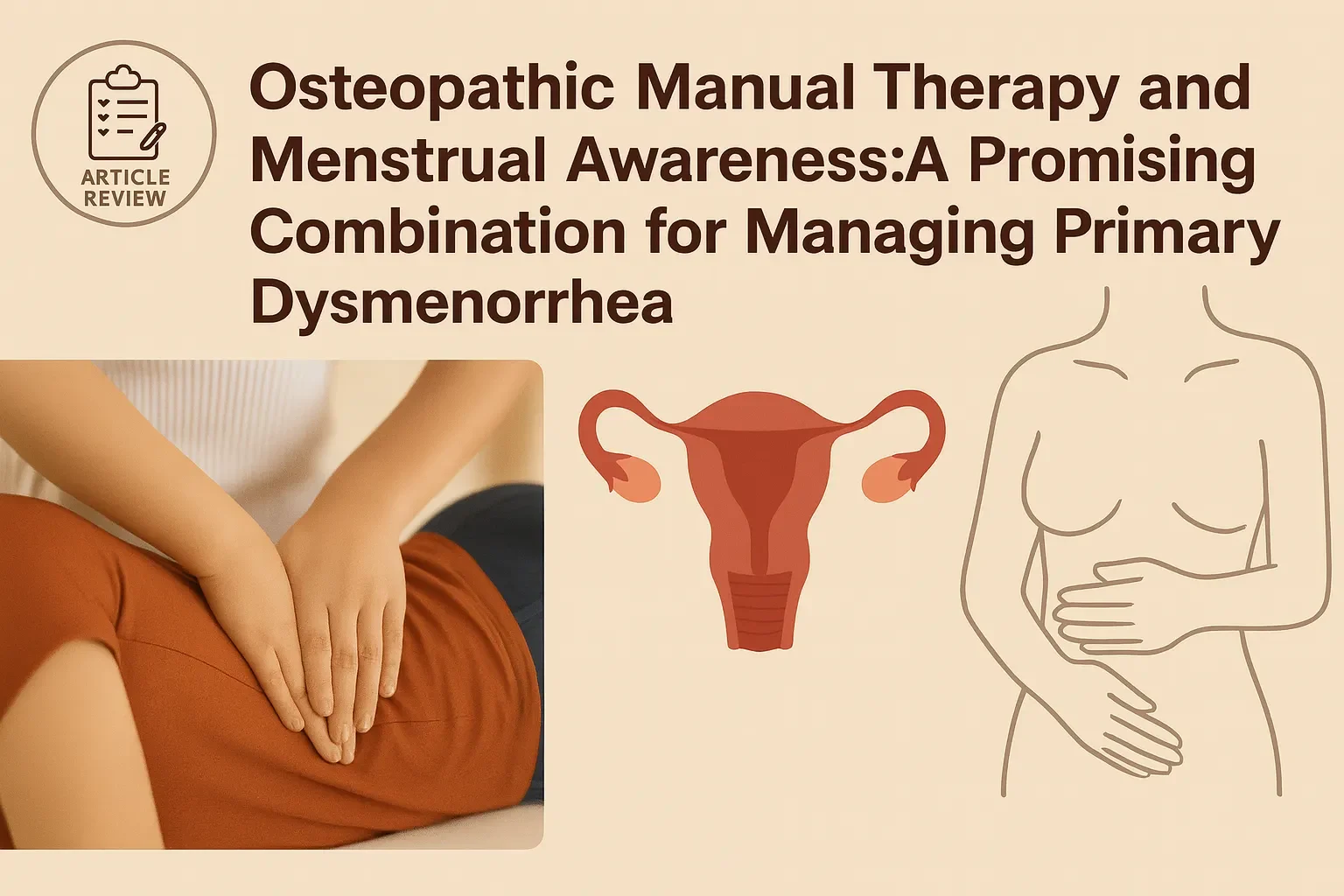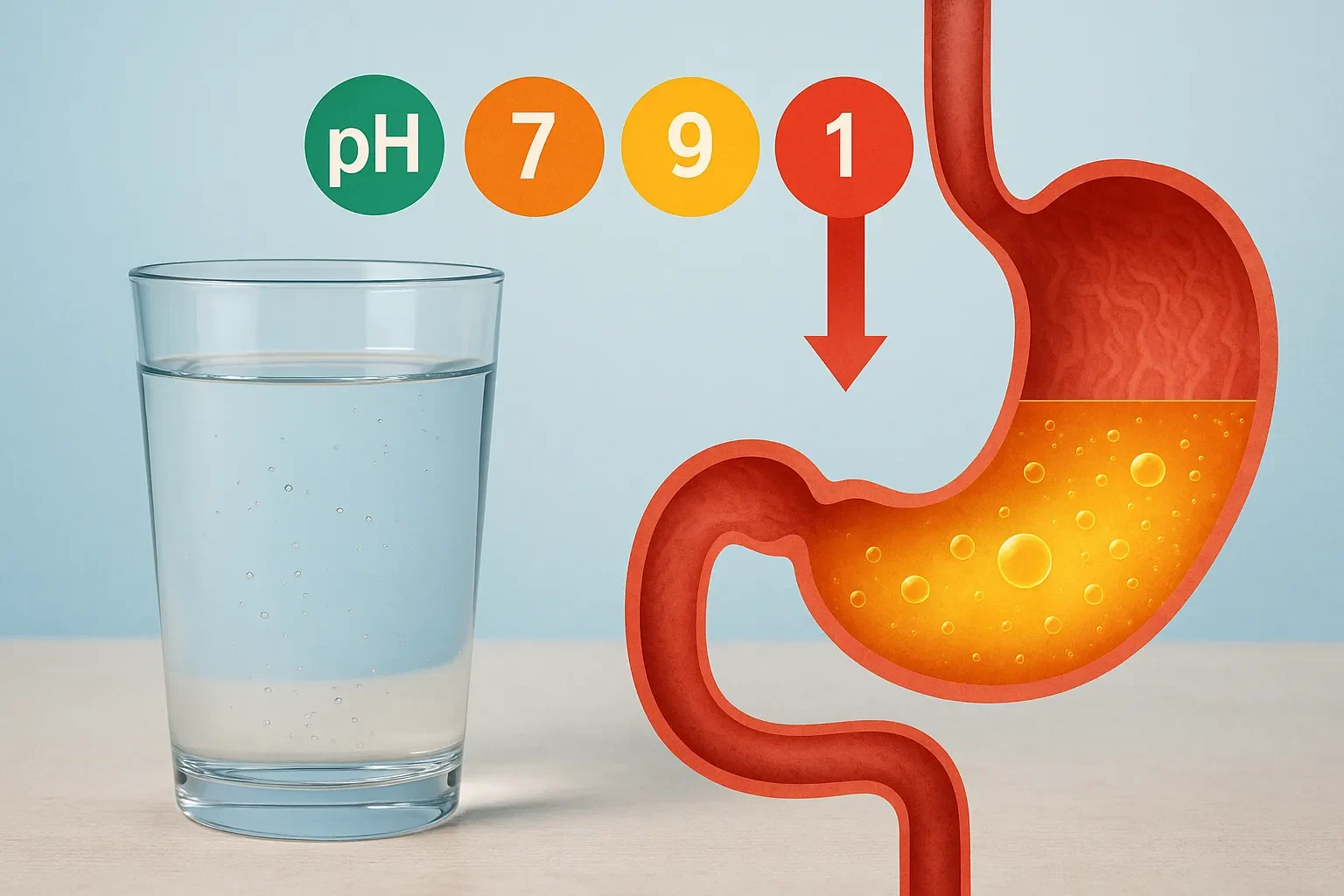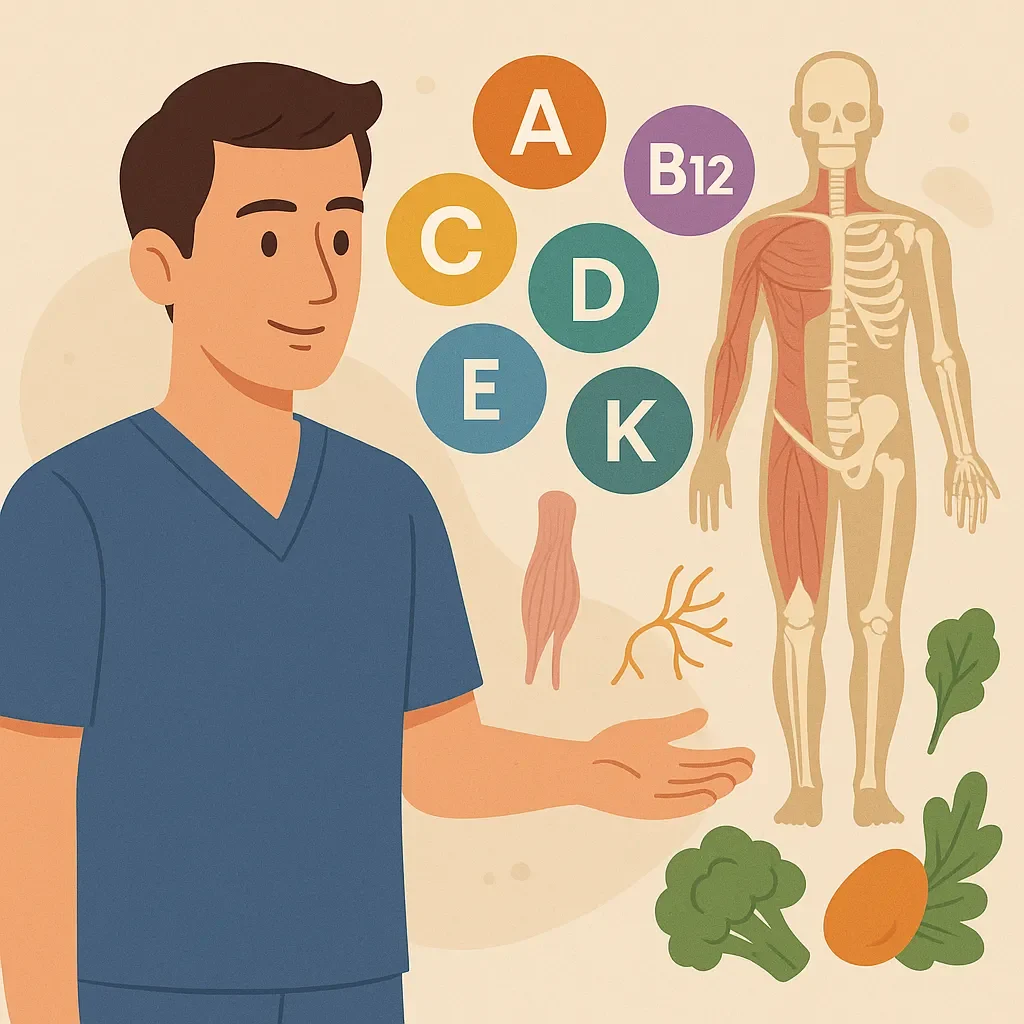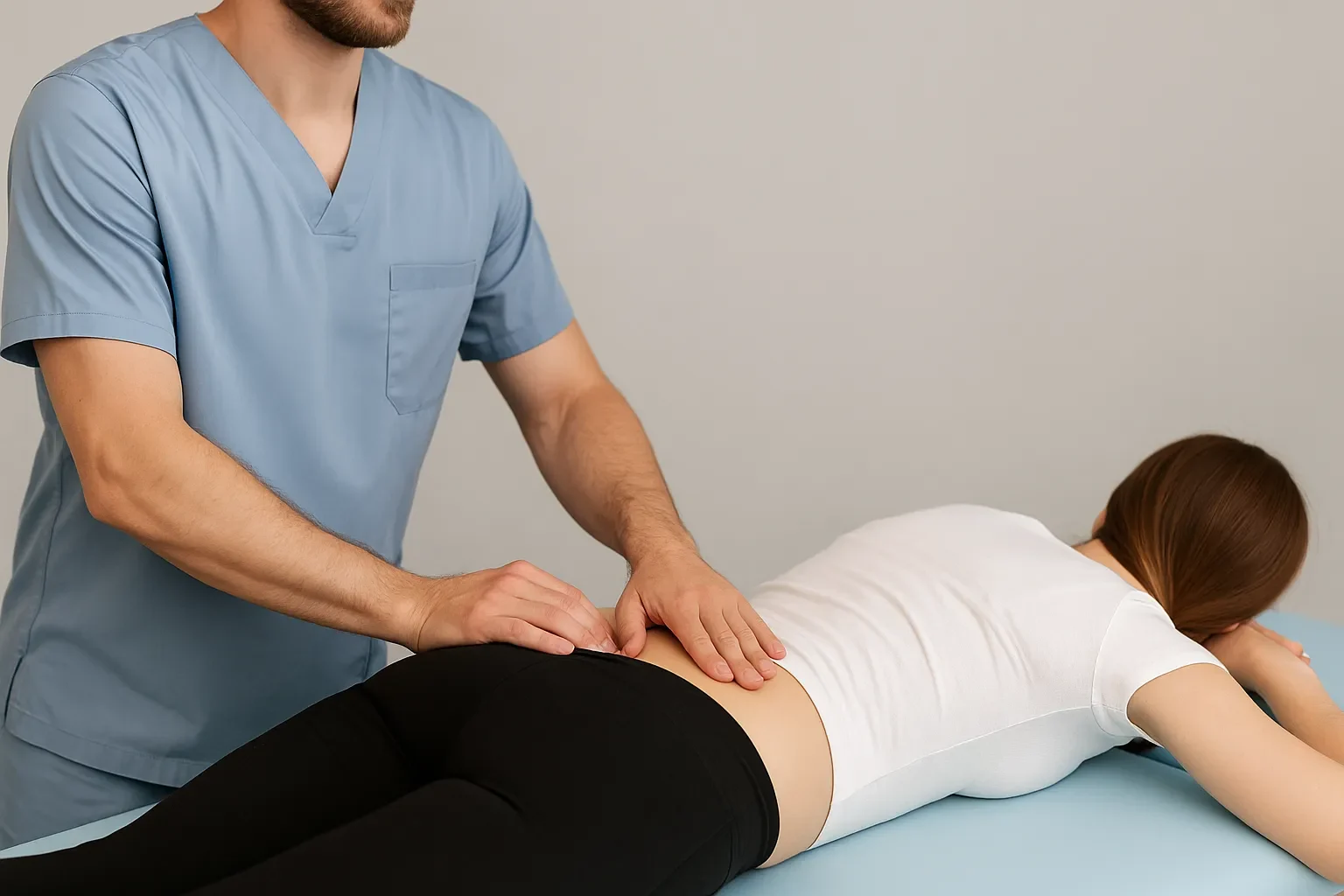Based on the study: “Potential effects of combining osteopathic manual therapy and menstrual awareness on pain and associated symptoms in women with primary dysmenorrhea: A randomized clinical trial” (Conesa-Albaladejo et al., 2025, International Journal of Osteopathic Medicine).
Introduction
Primary dysmenorrhea—the recurring menstrual pain without an underlying medical condition—is one of the most common gynecological complaints, affecting between 50% and 90% of women of reproductive age. Symptoms extend beyond abdominal cramps, often including low back pain, headaches, nausea, and fatigue, all of which can significantly impair quality of life, daily function, and emotional well-being.
While non-steroidal anti-inflammatory drugs (NSAIDs) remain the primary treatment, many women seek complementary or non-pharmacological options. A recent randomized clinical trial published in the International Journal of Osteopathic Medicine explored an innovative approach: combining osteopathic manual therapy (OMT) with menstrual body awareness (BA) education. The study found that this integrative approach led to significant improvements in pain, body satisfaction, and quality of life.
Study Overview
Purpose
The trial aimed to determine whether a structured OMT protocol, when combined with menstrual awareness education, could deliver greater symptom relief than awareness sessions alone in women with primary dysmenorrhea.
Participants
- 39 women (mean age 30.4 years) diagnosed with primary dysmenorrhea.
- All reported moderate to severe menstrual pain (≥4/10 on a visual analogue scale) for at least half of their cycles in the past year.
Design
- Two groups:
- BA + OMT group: Two group body awareness sessions + three individual OMT sessions.
- BA-only group: Two group body awareness sessions only.
- Duration: 9 weeks, spanning parts of three menstrual cycles.
- Treatments were delivered by experienced osteopaths and physiotherapists.
What the Interventions Included
Menstrual Body Awareness Sessions
These group sessions provided:
- Education on menstrual anatomy and physiology.
- Understanding of dysmenorrhea’s phases and symptoms.
- Self-care strategies and symptom tracking using a menstrual cycle app.
- A shared online folder with evidence-based resources on menstrual health and pain management.
Osteopathic Manual Therapy Protocol
Three 45-minute sessions included:
- Global pelvic manipulation – Restoring mobility in the lumbosacral region and sacroiliac joints.
- Compression of the fourth ventricle (CV-4) – A craniosacral technique to promote relaxation and improve lymphatic flow.
- Myofascial and visceral release techniques – Including ligament releases, pelvic adhesion mobilization, and abdominal lymphatic drainage to improve blood and fluid circulation.
Key Outcomes Measured
- Pain intensity – Visual Analogue Scale (VAS).
- Pain perception – McGill Pain Questionnaire.
- Body satisfaction – Body Satisfaction and Global Self-Perception Questionnaire.
- Quality of life – SF-36 Health Survey.
- Patient global impression of change – Self-reported improvement post-treatment.
Results
The BA + OMT group showed significantly greater improvements than the BA-only group in:
- Pain intensity (p = 0.007) and pain perception (p = 0.025).
- Quality of life (p < 0.001), including physical, emotional, and social domains.
- Body satisfaction (p < 0.001).
- Perceived improvement – 94.7% reported moderate to strong improvement versus 35% in the BA-only group.
Effect sizes were large for all primary outcomes, suggesting not just statistical, but clinically meaningful benefits.
Why This Matters for Osteopathic Practice
- Integration amplifies results – Education paired with manual therapy yields better outcomes.
- Beyond pain relief – Enhancing body satisfaction and self-image can be just as transformative as reducing symptoms.
- Practical application – The protocol was straightforward, making it realistic for everyday osteopathic practice.
Limitations & Future Research
- Small sample size – Larger, more diverse studies are needed.
- Short-term follow-up – Long-term efficacy remains unknown.
- Condition-specific measures – Future research could incorporate more targeted assessment tools.
Conclusion
The study, “Potential effects of combining osteopathic manual therapy and menstrual awareness on pain and associated symptoms in women with primary dysmenorrhea: A randomized clinical trial” (Conesa-Albaladejo et al., 2025), shows that integrating OMT with menstrual awareness education can significantly reduce pain, improve quality of life, and foster a more positive body image.
For women with primary dysmenorrhea, and for the practitioners who care for them, this combined approach offers a safe, evidence-backed, non-pharmacological treatment option.
Source:
Conesa-Albaladejo M., Espí-López G.V., Martínez-Graullera E., Arnal-Gómez A. (2025). Potential effects of combining osteopathic manual therapy and menstrual awareness on pain and associated symptoms in women with primary dysmenorrhea: A randomized clinical trial. International Journal of Osteopathic Medicine, 56, 100761. https://doi.org/10.1016/j.ijosm.2025.100761








